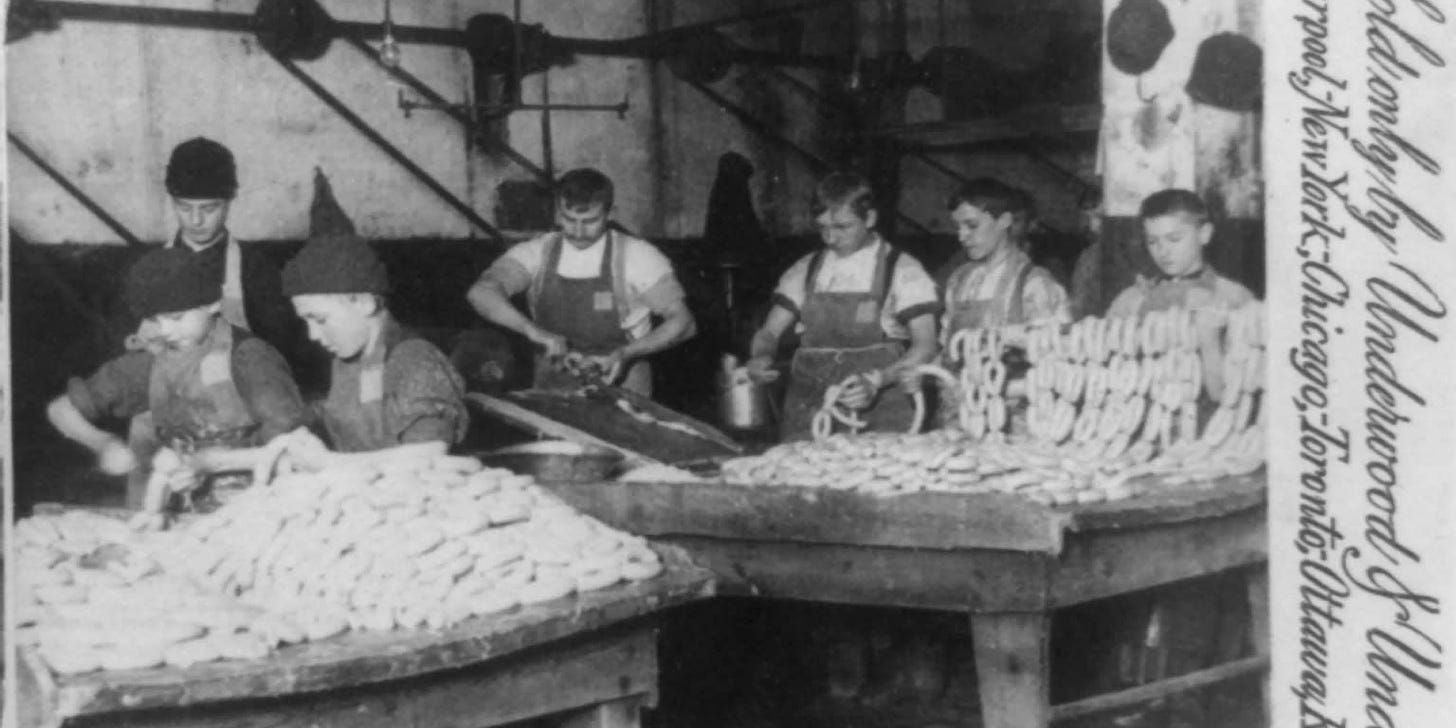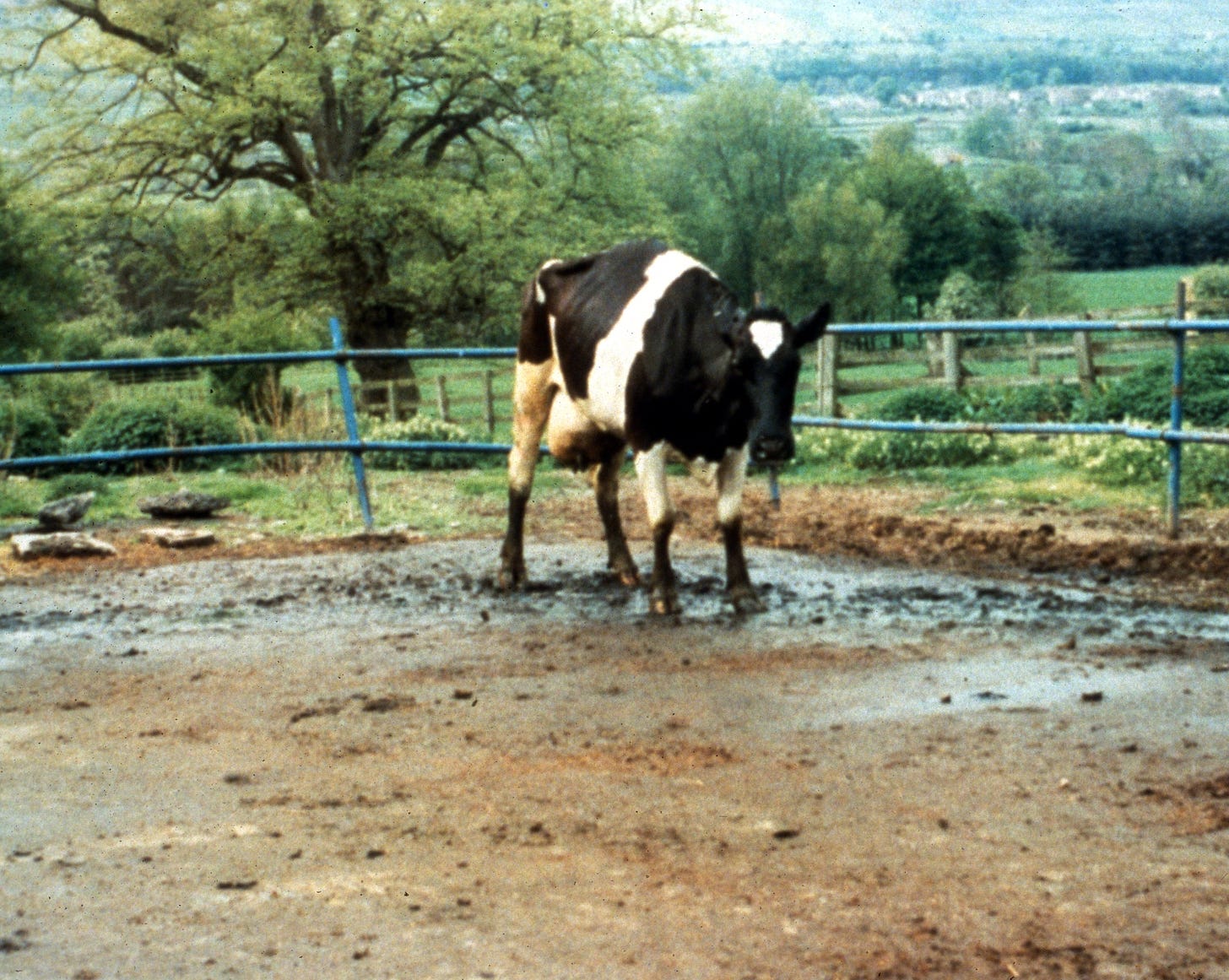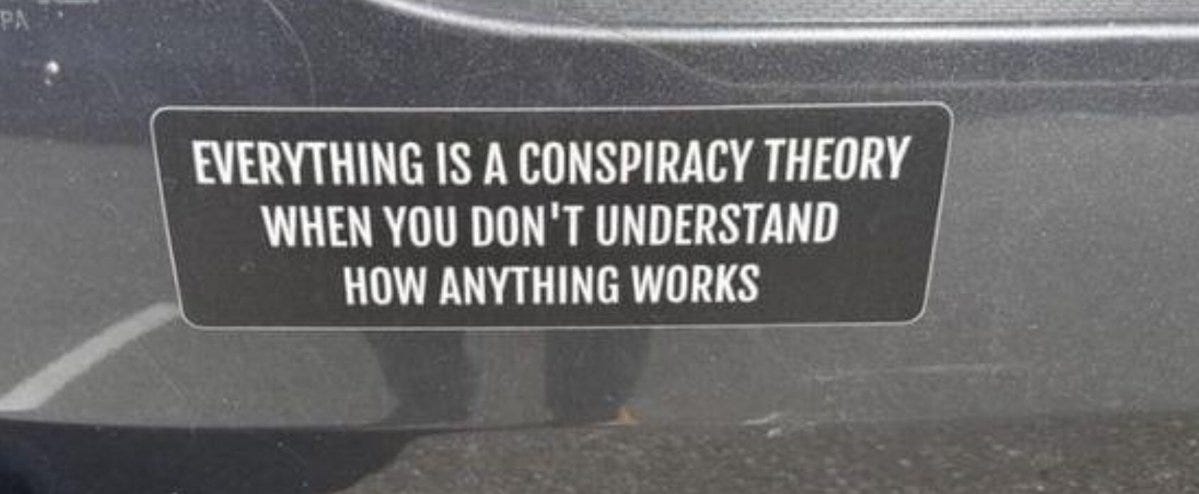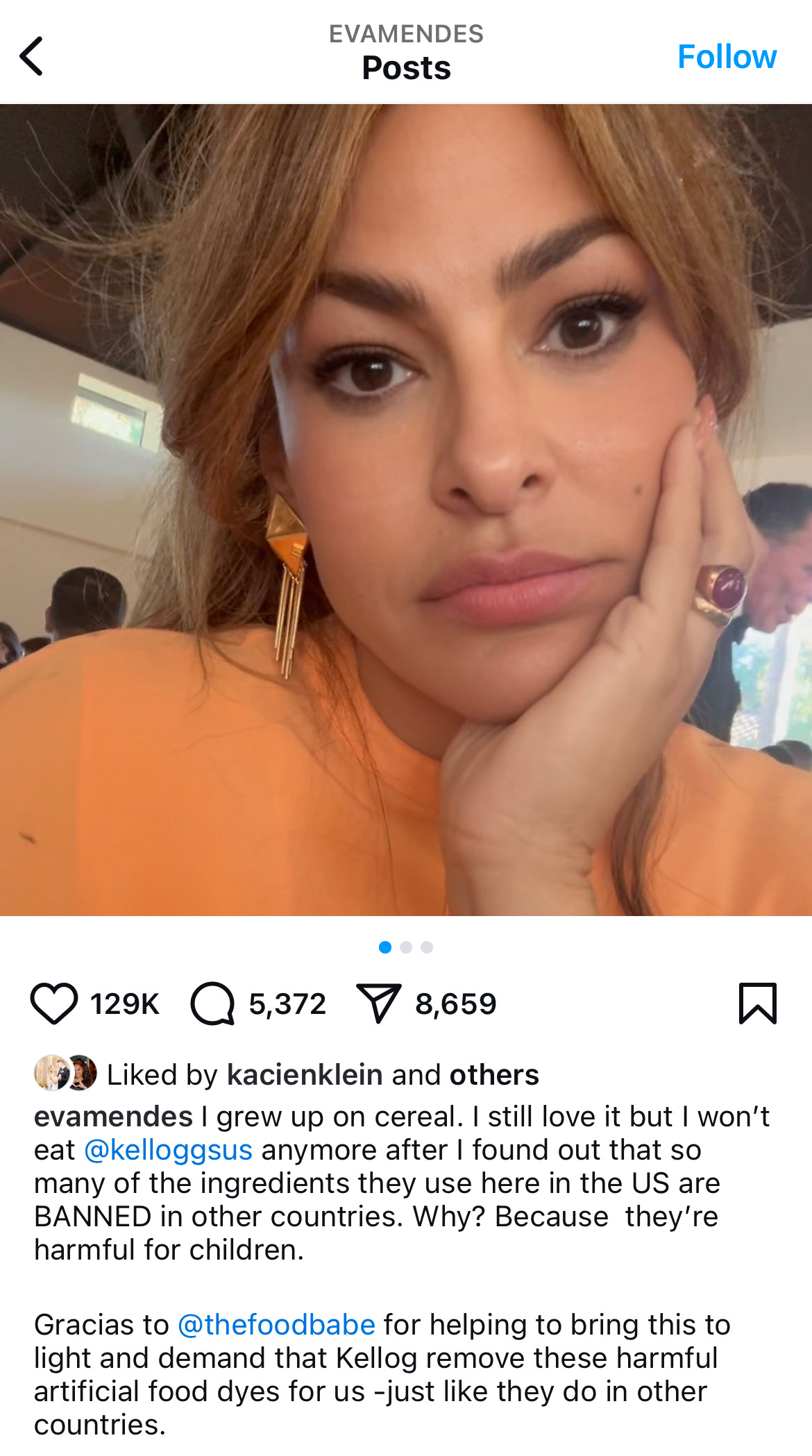"But they ban the chemicals in other countries!"
On chemophobia, American exceptionalism, and why we should think about the historical context of the federal agencies that regulate our food before assuming they aren't doing their job
I lied. Put your clothes back on. We’re going to talk about why food safety standards and regulations in the United States aren’t as bad as uninformed celebrities, wellness influencers, and egotistical grifters would have you believe.
You’ve probably heard statements like these before:
“We use so many ingredients that are banned in other countries.”
“The pasta in Italy is just different, the wheat is so much better.”
“When I travel abroad for vacation all my stomach issues go away.”
…or something to that effect.
Maybe you’ve co-signed the concept that American food is garbage, the Europeans are doing it so much better than we are, and “Big Food” is making us sick.
But as with nearly all things nutrition, it is not that simple. It’s not black-and-white. I say, “nuance is needed” so often at this point, it might as well be my new signature catchphrase.
So let’s talk about it. But first, let’s take a trip back in time.
Origins of the FDA and EFSA
It’s 1905.
This guy named Upton Sinclair is publishing installments in a socialist newspaper about the horrors of the meatpacking industry. You’re kind of into it. You work in a garment factory or on an assembly line or I don’t know, maybe you’re eight years old and there aren’t really protections against exploitative child labor. Either way, you’re keenly aware of the concept of “wage slavery” Sinclair writes about since you experience it first-hand.
America is emerging from The Gilded Age and steaming straight into the Second Industrial Revolution. The gap is widening between the haves and have nots, which means a growing upper middle class demands more of the finer things in life while the working poor struggle. From food to fashion and everything in between, this starts to shape modern preferences and expectations of what “making it in America” looks and feels like.
But there’s a pesky problem. The food could legitimately kill you. Which sucks, because you know, you have to eat. But you could have a deadly accident at the meatpacking plant, or a sudden bout of food-borne illness that makes you void all bodily fluids, or someone with tuberculosis coughed on your ground beef. Plus, there’s formaldehyde in the food which makes it really confusing to tell what’s fresh and what isn’t. It’s not a fun time.
Sinclair’s series didn’t really catch on at first, but a year later it was published in book form. “The Jungle” goes into explicit detail about the unsanitary, unsafe, and oppressive working conditions in Chicago’s meatpacking industry. It’s now regarded as one of the most influential books in American history. But even though Sinclair hoped it would spark change for the working class, it mostly grossed everyone out and made it obvious how badly reform and regulation was needed for a safe food supply.
In 1906, President Theodore Roosevelt signed The Pure Food and Drug Act, also known as the Wiley Act. That same day, he also signed the Federal Meat Inspection Act. Big day for progressive policies. But these were the first of a few significant consumer protection acts. Although the Wiley Act would eventually be replaced by the Federal Food, Drug, and Cosmetic Act of 1938, it led to the creation of the Food and Drug Administration (FDA).
Today, the FDA is the federal agency tasked with protecting and promoting food safety (among many other things). They have oversight across all 50 states, and even though they may collaborate or support international food safety or public health initiatives, they’re pretty specific to the United States.
Across the Atlantic, there’s a bit of a different situation.
For virtually all of the 20th century, there wasn’t really an FDA-like agency for European countries as a whole, even though individual nations on the European continent were working together to facilitate trade across their borders. I found this highly academic but deeply interesting narrative analysis of the history from an author named Alberto Alemanno.
He writes:
“The existing EC [EU] food legislation has come into being as a result of the gradual harmonization of national rules which was necessary in order to guarantee the free movement of foodstuffs and prevent distortions of competition in the establishment of the single market. Thus, the EC [EU] food law has traditionally been conceived as a set of rules prompted mainly by the desire to eliminate trade obstacles within the European internal market and have the force of law in all member states. Like several other European policies, the legislative framework or food law has been primarily designed to answer economic rather than safety or societal concerns. In fact, no explicit reference to public health or consumer protection was made in the Treaty of Rome until the adoption of the Single European Act (1986) and the Maastricht Treaty (1992).
So yeah. In other words, Europe was super into the idea of making it easier to sell stuff and make money, but pretty hands-off when it came to making sure the food was safe. What could go wrong?
Well, a lot actually.
Maybe you’ve heard of bovine spongiform encephalitis (BSE). No? That’s OK, we usually just call it “mad cow disease” and you probably have heard of that.
The 1997 outbreak of this fatal neurodegenerative cattle disease in the United Kingdom wasn’t the first food safety crisis in Europe, and it wasn’t the last. But it was one of the most notable. And for good reason, I think. I was still in elementary school at the time but I remember seeing headlines and splashy news stories with video clips of cows who did indeed look like they were going mad. It freaked everyone out and made you afraid to eat beef or drink dairy, lest it transmit the human version to you.
BSE is still not fully understood but we think it’s caused by a prion, which is a misfolded protein. And in the UK, it was traced back to meat-and-bone meal fed to calves of dairy cows, which was a fairly common practice at the time.
Note: The highest risk of human transmission is thought to come from eating tissue from the brain, spinal cord, or digestive tract of infected animals. The prion is not destroyed during cooking, so eat those things at your own risk, even though risk is now substantially reduced due to a ban on this type of feed. Additionally, both US and UK slaughterhouses are required to appropriately dispose of these and other specified risk materials. A few isolated cases of BSE still pop up here and there, but it’s nothing like it was in the 1990s or early 2000s.
Similar to what took place in the United States nearly a century earlier, there was a public outcry to demand better. This contributed to the formation of the European Food Safety Authority (EFSA) in 2002. Since the European Union was already a thing (formed in 1993) the EFSA was the “first attempt to address all aspects of food safety at EU level by laying down a comprehensive EU food policy” from farm to fork (Allemano, 2006).
Philosophical Differences Between the FDA and EFSA
So given the history, I think it starts to make sense why historical and modern approaches to food safety and regulation look different between the United States and the European Union.
It might help to break down some fundamental differences in how the FDA and EFSA assess and manage risk.
In Europe, the EFSA (along with the European Commission) are responsible for the entire EU. The EFSA handles risk assessment through evaluations and monitoring while the European Commission handles risk management. Both are important, but I’d argue that risk management is what ultimately matters because it determines what we do with the data and knowledge we can glean from the food system.
In other words, it’s one thing to know about a risk but it’s another to develop policies and procedures to protect people from it. The EFSA and European Commission both operate under very precautionary principles. It’s generally assumed that ingredients must be proven safe, and until then, they may be banned or restricted until that burden of proof is provided.
Compare that to the United States. Here we have the USDA and FDA. Both are responsible for different regulatory activities and oversight, such as mandatory labeling and conducting inspections (although massively understaffed and bogged down with layers and layers of bureaucracy). And while facilitating trade is absolutely a part of it, it’s really framed more around consumer protections and regulation.
That’s actually a bit ironic, since there’s such a strong call for de-regulation from certain groups right now.
However, the U.S. takes more of a risk-based approach, which runs counter to how the EU approaches it. Here, ingredients are generally allowed unless or until there is evidence of harm.
This really bugs a lot of people, and prompts some of those statements I mentioned at the beginning.
That’s because the FDA currently allows the food industry and food manufacturers to determine which ingredients are “generally recognized as safe”. I think people picture “Big Food” overlords greedily rubbing their white-gloved hands together as they douse food in questionable substances before diving into a pile of coins like Scrooge McDuck.

I’m not saying they aren’t doing some of that, figuratively speaking, but it’s also important to read the fine print. Because here’s what the FDA actually says:
“…any substance that is intentionally added to food is a food additive…subject to premarket review and approval by FDA, unless the substance is generally recognized, among qualified experts, as having been adequately shown to be safe under the conditions of its intended use…”
You can read more about the process HERE. And there is some confusion and contention around the GRAS designation, so just be aware it’s not a perfect system.
You can report adverse events or negative effects to the FDA through MedWatch, the FDA Safety Information and Adverse Event Reporting Program. The FDA will issue safety alerts for FDA-regulated products when appropriate. Since 2017, they have issued 684 alerts, the majority of which were for medical devices (338 alerts) and drugs (290 alerts). During this time, no alerts were issued for food or nutritional products.
Bottom line: The EFSA and European Commission are more cautious and conservative compared to the USDA and FDA, which historically have been more laissez-faire about regulating industry. There are a lot of similarities between these regulatory agencies, but when it comes to things like specific food additives or colorings, antibiotic use in livestock, GMOs, etc. the EU is generally much more strict.
So what can we make of all this? We’re getting there, so bear with me. At the very least, I think it shows there’s a system of checkpoints that works so long as the public and medical field engages with it as intended. And perhaps that the FDA disproportionately focuses resources on the Drug side vs. the Food side.
Let’s talk more about risk…
Hazard vs. Risk
It might also be helpful to clarify the difference between a hazard and a risk.
A hazard has the potential to harm.
Risk the likelihood of that hazard actually causing you harm.
Exposure measures how long you were exposed to a hazard, or how much you were exposed to.
A real-world example: You’re outdoors enjoying some sunshine on a nice day. The UV rays from the sun represent a hazard. If you don’t use sunscreen or cover your skin, there’s a risk of sunburn. But only if you stay outside too long or don’t reapply a protective barrier.
This is massively oversimplified but you kind of get the idea. The mere presence of the sun doesn’t automatically mean you’ll end up with a painful sunburn. Likewise, the mere presence of a hazard doesn’t automatically mean you’re at risk.
However, we also have to factor in vulnerability. In some cases, a hazard is more risky to certain people compared to others. In our example, some people are more at risk of sunburns or skin cancer than others. Add a multiplier for that, and we get somewhat closer to a predictive model of what actually represents a risk.
Apply this same oversimplified equation to the food system and well…that’s where a lot of people get it wrong. People like the Environmental Working Group, who fail to distinguish between hazards and risks every time they scare the general public with the Dirty Dozen/Clean 15 list. People like Vani Hari, AKA Food Babe, who consistently demonstrate either a fundamental misunderstanding or a willful misrepresentation of this concept, to viral acclaim. People like the pseudo-experts who sat in front of senators and testified that the food system is causing all our ills and ailments.
And that brings us back to the point I’m trying to make…
The FDA Is Doing Its Job
It’s just that its job isn’t to create a utopic food system. Nor is it trying to be an American equivalent of the EFSA since the Europeans do it so much better.
Another side note: it’s not even accurate to claim that the U.S. allows a free-for-all in the food supply, allowing all sorts of ingredients and food additives banned in other countries.
did a very thorough breakdown on why this is false. I highly recommend reading it.And I’m not saying this as some kind of weird FDA apologist. I think we should critique federal agencies. I think we should expect them to raise their standards. I think we should demand that they responsibly use our tax dollars, which funds their operations, on our behalf to ensure everyone has access to safe, high-quality food.
But get ready, because I’m about to connect the dots and bring this thing across the finish line:
The fundamentally different approaches to food safety and regulations in the United States and Europe (through the FDA and EFSA, respectively) can be mostly, or at least partially, explained by their origin stories and the history informing their creation.
These key differences typically aren’t communicated very clearly, if they’re shared at all.
This promotes a lot of confusion, missing information, or disinformation among members of the public…AKA, you and me and anyone else who isn’t immersed in this type of work because it’s their job.
We lived in a culture saturated in chemophobia, or a fear of chemicals. Health and wellness influencers prey on this, weaving an implied message that food can’t be trusted into very popular forms of media and marketing.
As a result, it’s easier to jump to conclusions or form assumptions which create a hierarchy that positions Europe and European food at the top, with the U.S. and everyone else below.1
This feeds into the Euro-centric standards reflected in what we perceive to be “healthy eating”. It’s confirmed by unsubstantiated, anecdotal claims about feeling less bloated and more energized while on vacation in [insert western European country] that feed the algorithms on social media.
This irks anyone with an internalized concept of American exceptionalism, because if we’re supposed to the best at everything, why aren’t we the best at this?
That, and:
But now you do know how this works, or at least, you understand it better than you did 10 minutes ago.
And finally, chew on this idea from the Allemano paper I keep referencing:
“Europeans tend to favor traditional foods and express skepticism for new technologies. Americans have always been more in favor of new technologies than traditional food processing…
A comparison between the EFSA and the FDA clearly shows that culture and tradition play a silent, though crucial, role in the regulatory process and the resulting rules.”
We simply cannot make a direct comparison even though that’s exactly what our brains want to do. Food safety regulation is complex and culturally influenced. But the easiest thing most of us can conceptualize and relate to is the FDA. It makes sense to me that many people expect it to meet the exact same equivalence standards as the EFSA because it’s often seen as the EU equivalent of the FDA.
At any rate, I think it’s safe to say that while Allemano was likely correct in that assessment when this paper was written in 2006, culture and tradition are not playing a silent role anymore.
I’ll leave you with some final thoughts and necessary nuance.
In order to have enough food, the food must be safe.
We have the safest, highest quality food supply we’ve ever had AND there’s lots of room for improvement.
The misinformation about food, nutrition, and health is getting louder and louder AND we need to pay attention to what fear-mongering influencers are tapping into.
Next up, I’ll talk more about how this feeds right into the “Make America Healthy Again” movement…
Thanks for reading, as always. I cover topics like these when I can, and offer weekly recommendations for What’s Worth Reading in the world of food, nutrition, wellness, and sustainability. If you’re into that kind of stuff, I hope you’ll stick around.
Citations:
Alemanno, Alberto, The Evolution of European Food Regulation - Why the European Food Safety Authority is Not a EU-Style FDA?. WHAT'S THE BEEF? THE CONTESTED GOVERNANCE OF EUROPEAN FOOD SAFETY, C. Ansell & D. Vogel, eds., MIT Press, 2006, Bocconi Legal Studies Research Paper No. 1007451, Available at SSRN: https://ssrn.com/abstract=1007451
Institute of Medicine (US) Forum on Drug Discovery, Development, and Translation. Challenges for the FDA: The Future of Drug Safety, Workshop Summary. Washington (DC): National Academies Press (US); 2007. 2, Addressing the FDA’s Resource Challenges. Available from: https://www.ncbi.nlm.nih.gov/books/NBK52926/
https://www.fda.gov/food/food-ingredients-packaging/generally-recognized-safe-gras
Look around the world and notice that the EU and United States aren’t the only places with strong consumer protections for food safety in place.









